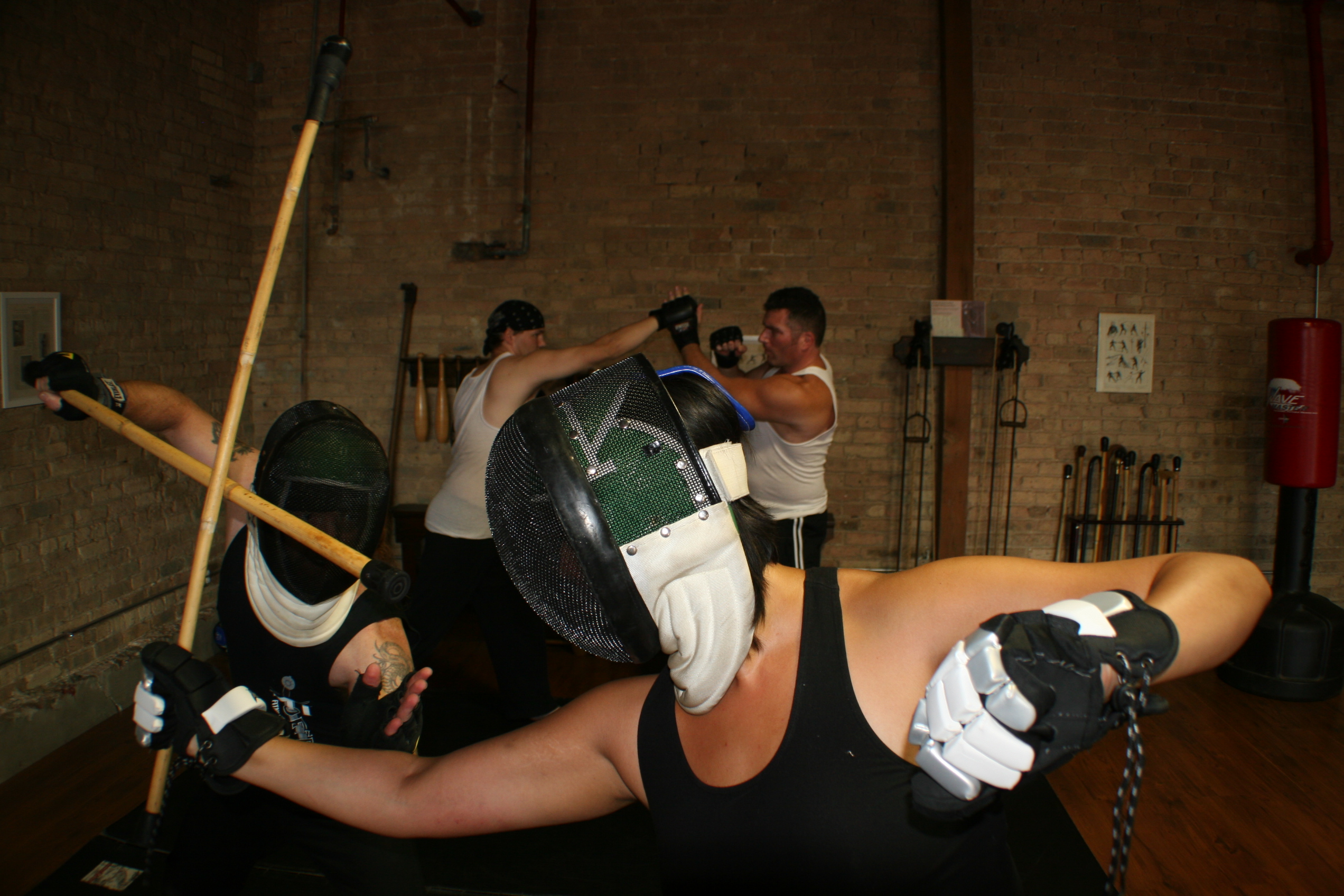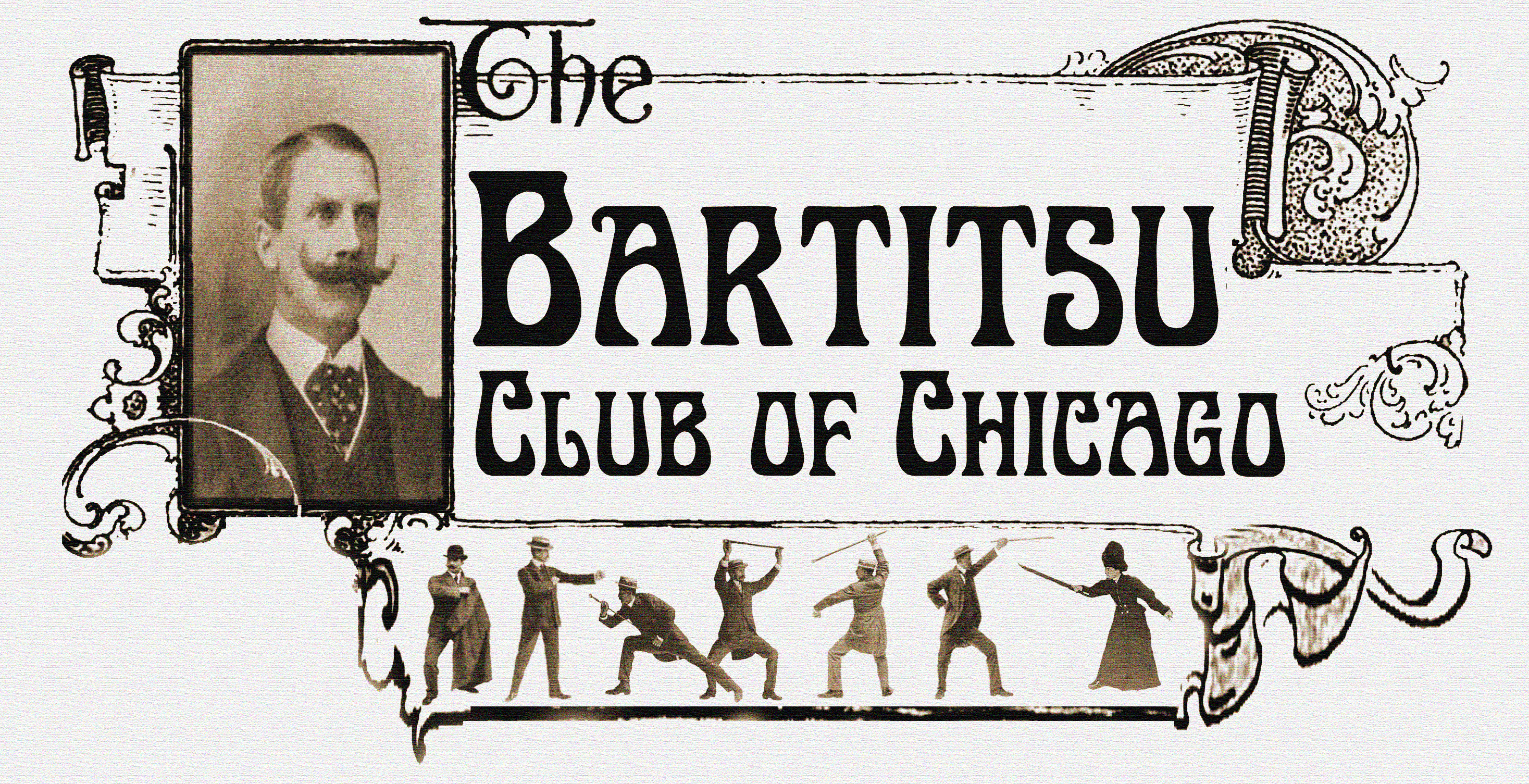Victorian Martial Arts: Bartitsu Relaunches May 25th!!!!
The Lost Martial Art of Sherlock Holmes is BACK!
Bartitsu and the old Bartitsu Club were key components as we were designing the Forteza studio. Designed as a way to introduce other martial artists to the unique “fusion” and “combat improvisation” of Barton-Wright, the one major request we had from students was a more structured way to introduce new comers to the fundamental boxing, kicking, throwing and stick-fighting skills upon which Bartitsu is based.
We listened, and after a year of fine-tuning, Bartitsu returns to Forteza on May 25th with a five hour workshop taught by renowned Victorian martial arts historian and Bartitsu Club of Chicago founder, Tony Wolf. A highly experienced martial arts instructor, Tony has taught Bartitsu intensives in England, Ireland, Italy, Australia, Canada and throughout the USA. Tony also edited the two volumes of the Bartitsu Compendium (2005 and 2008) and co-produced/directed the feature documentary Bartitsu: The Lost Martial Art of Sherlock Holmes (2010).
New “Introduction to Bartitsu” Course
But the relaunch does not end with the workshop. Tony will be ably assisted by Forteza instructors Nathan Wisniewksi and Treyson Ptak, who will then be taking the lead with our newly designed Introduction to Bartitsu course. Beginning June 5th, 6-week class is designed to instill basic striking, kicking, cane-fighting, grappling and safety skills. Perfect for those new to martial arts as well as those who are not familiar with the particular art which comprise Bartitsu, this course is high-energy, skills-focused and designed to lay a foundation that students will bring to on-going training in the Bartitsu Club of Chicago. The club meets twice a month for advanced training and “combat integration” – the unique blending of its component arts that makes Bartitsu an unique fighting art in its own right.
A Whole New World of Victorian Martial Arts
But Bartitsu is just one aspect of Forteza’s new Victorian Martial Arts program, which includes a wide-range of antagonistics, the study of fencing, boxing, wrestling and stick-fighting typically combined with physical culture (calisthenics, gymnastics and weight-training) that was popular in Britain and America in the late 19th century. Forteza’s Antagonistics courses include:
- Sabre and Bayonet Fencing;
- Stick Fighting;
- Bowie Knife and Tomahawk combat (most distinctly American weapons);
- Physical Culture; a truly “old school” workout regimen of calisthenics, Indian clubs, and more!
As we have done previously with our wildly popular Bowie and ‘hawk seminars, Antagonistics will be taught in a series of workshops and short courses, allowing students with limited time and busy schedules to get chance to sample the breadth of 19th century martial culture.
How Can YOU Get Involved?
Whether you’ve trained us before or are brand new to any martial arts, there are many ways to jump in to the relaunch of our Victorian Martial Arts program, and the sooner you get involved, the more affordable it is!
Bartitsu Seminar Date, Sunday May 25th from 12-5pm
$60, $75 at the door
Introduction to Bartitsu Course, Starts on Thursday June 5th from 7-9pm:
Length – 6 weeks
Cost – $125, discounted to $100 for seminar attendees!
Pre-register for both the seminar and introduction for $150, a $50 savings!
Continuing Classes: Bartitsu Club of Chicago Starts on Friday July 11th from 7-8pm:
Classes are on the second and fourth Friday of each month







